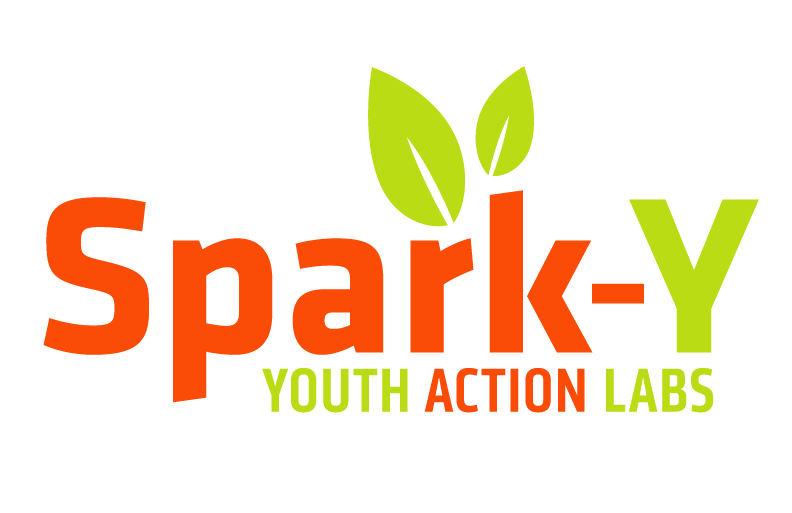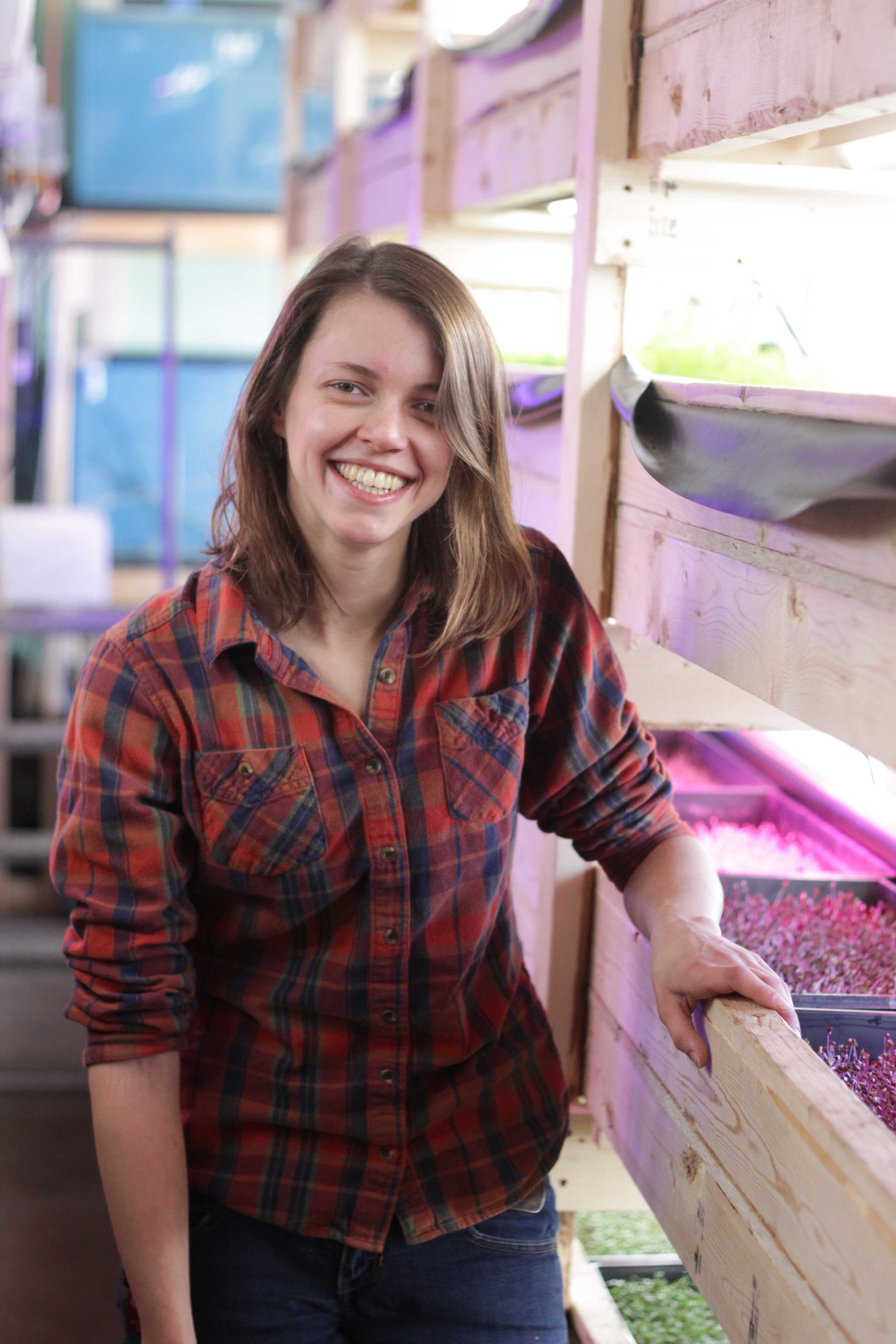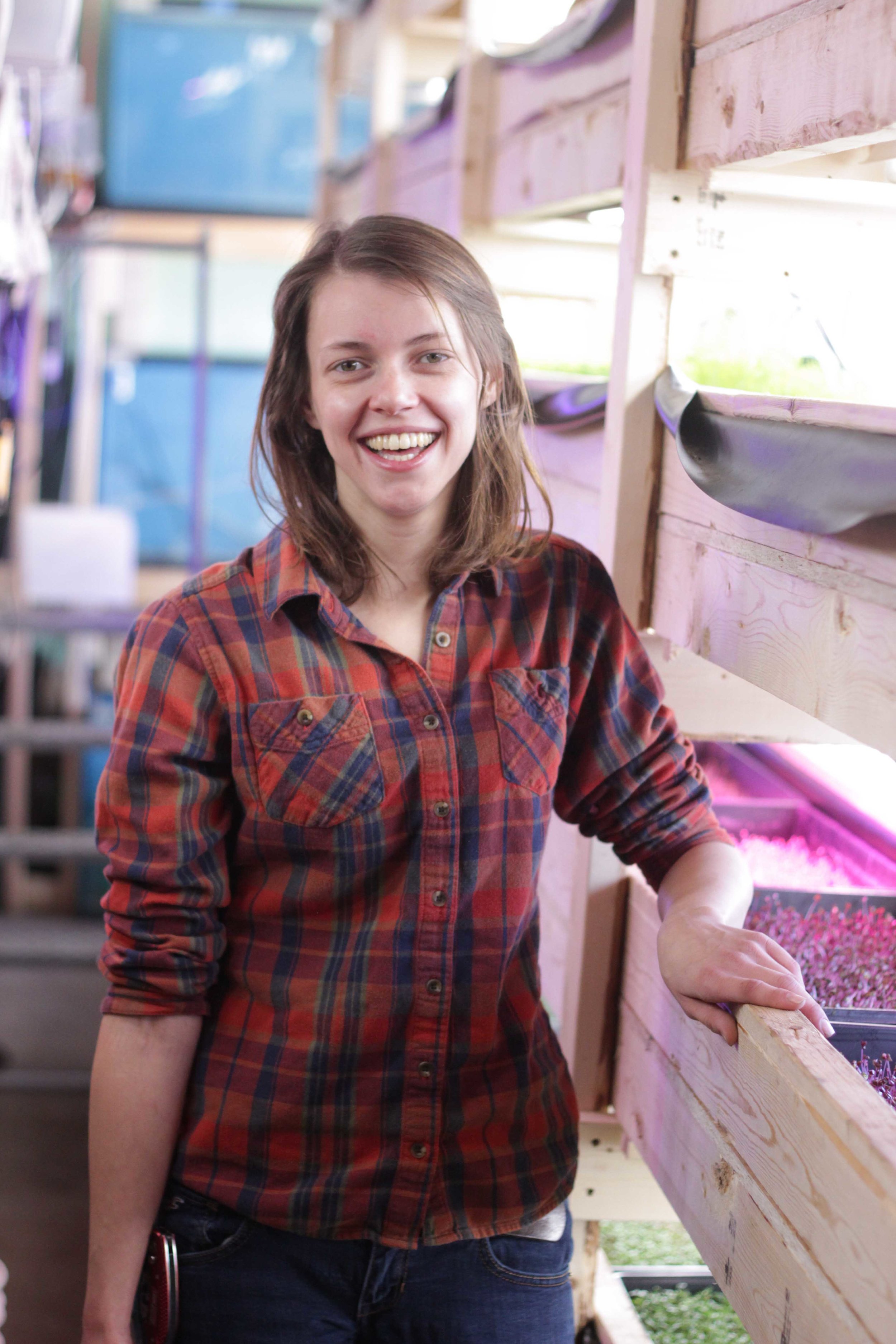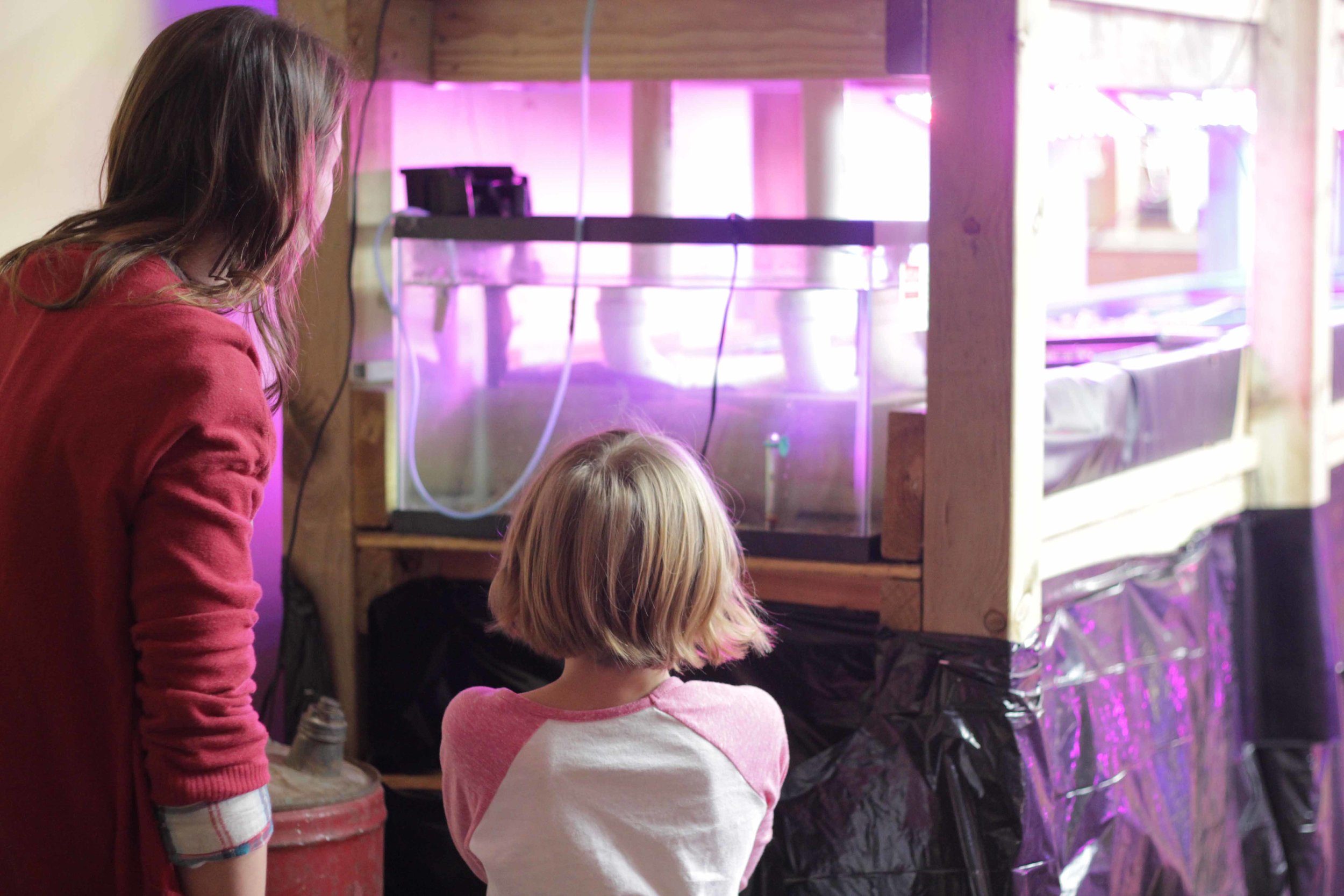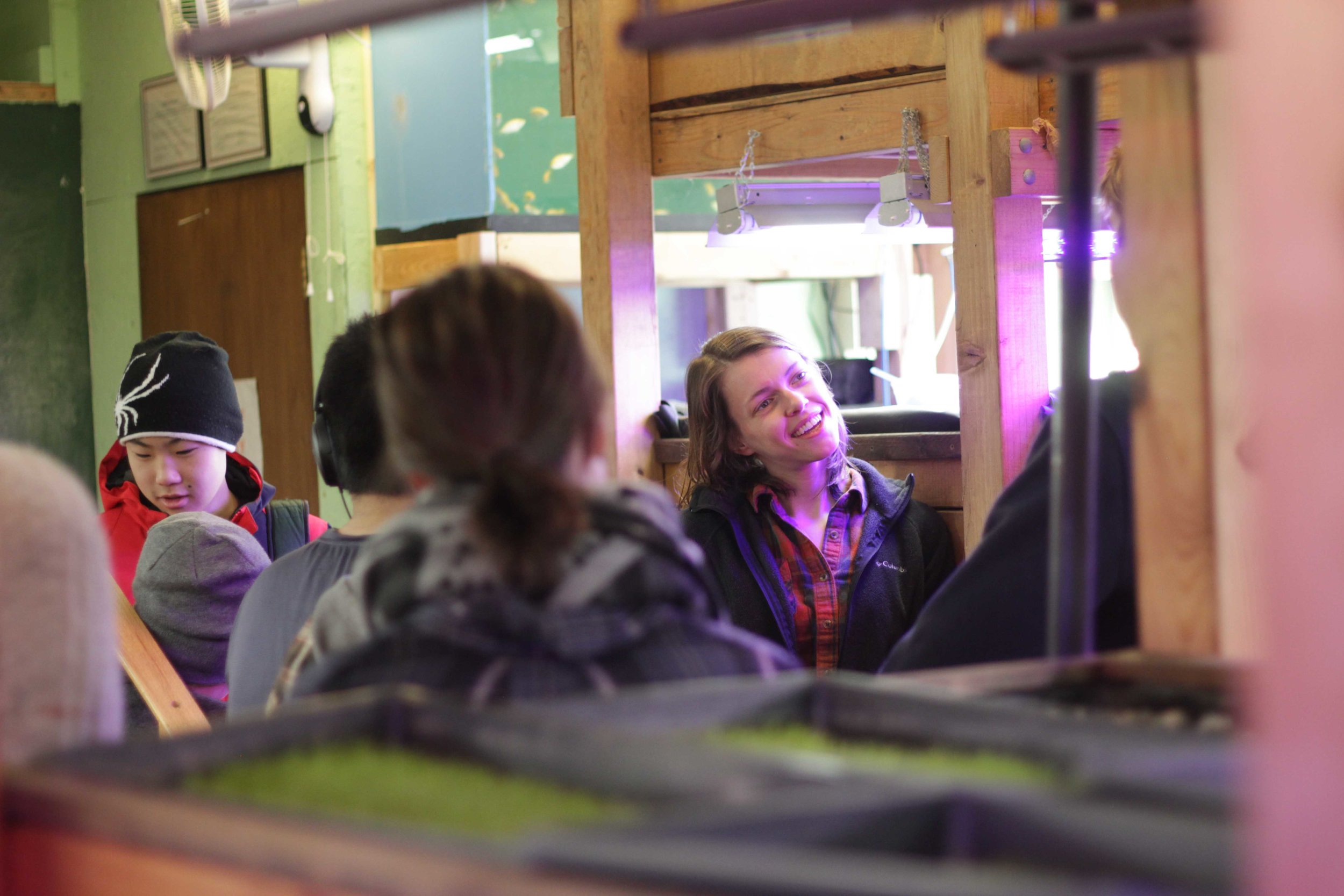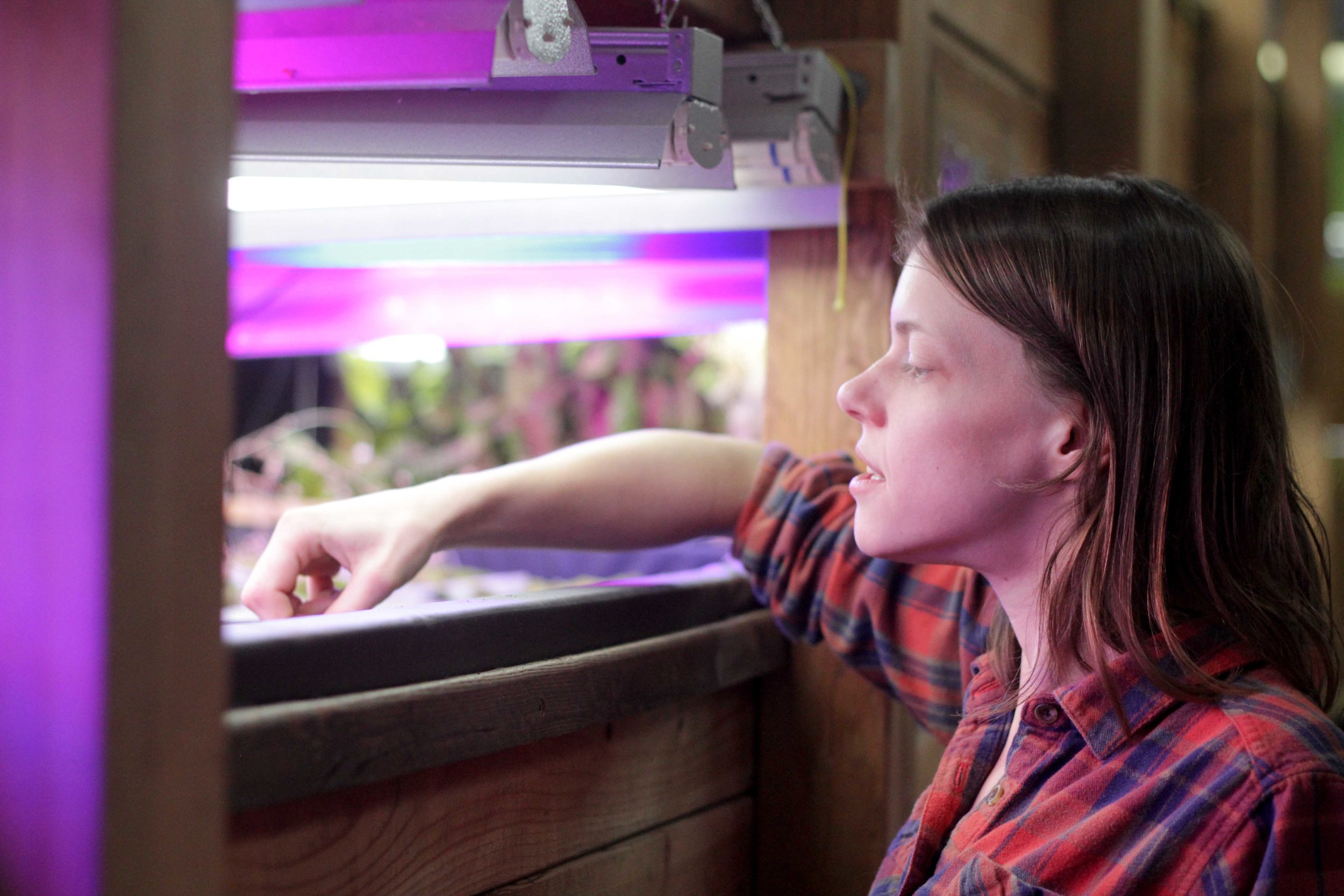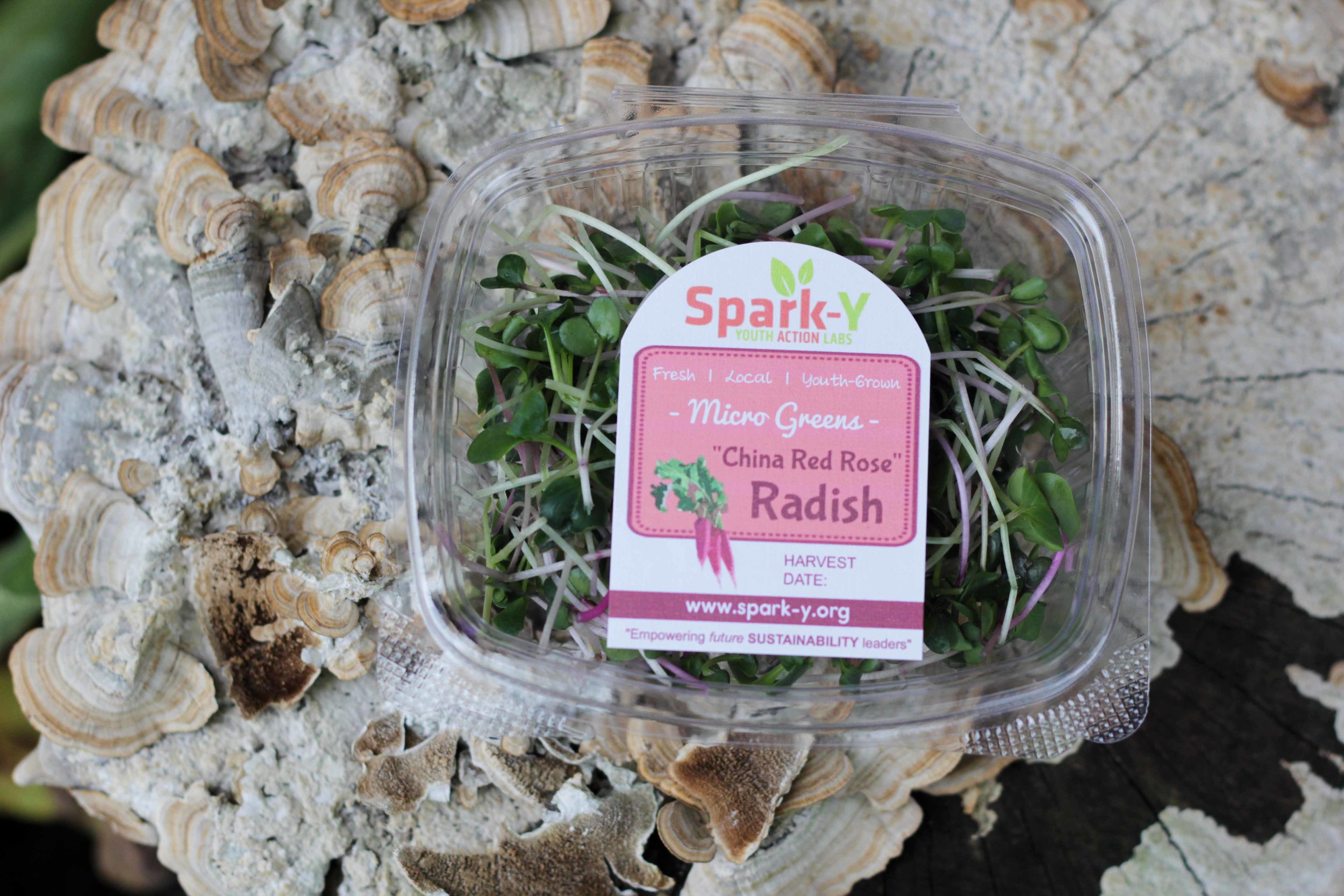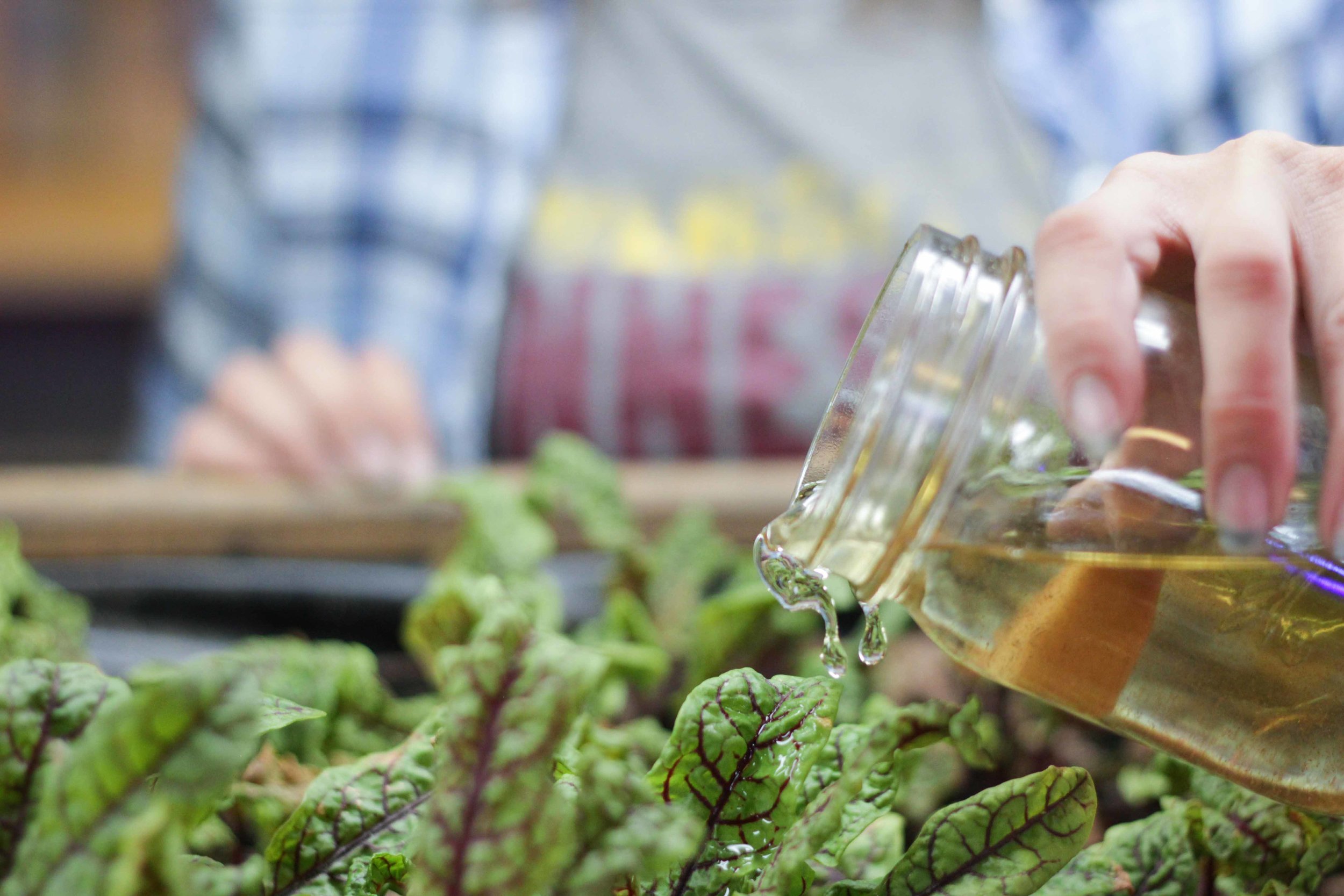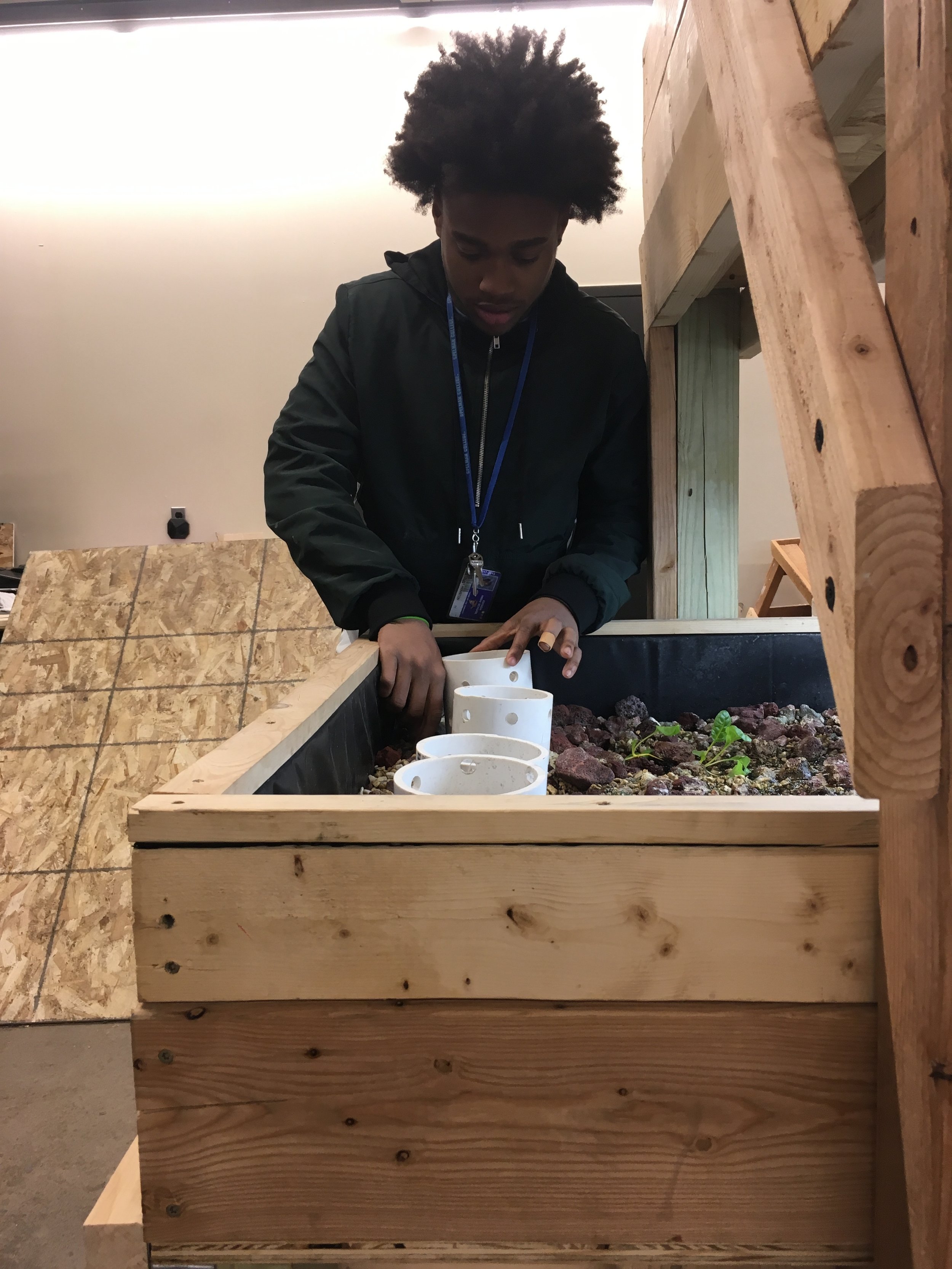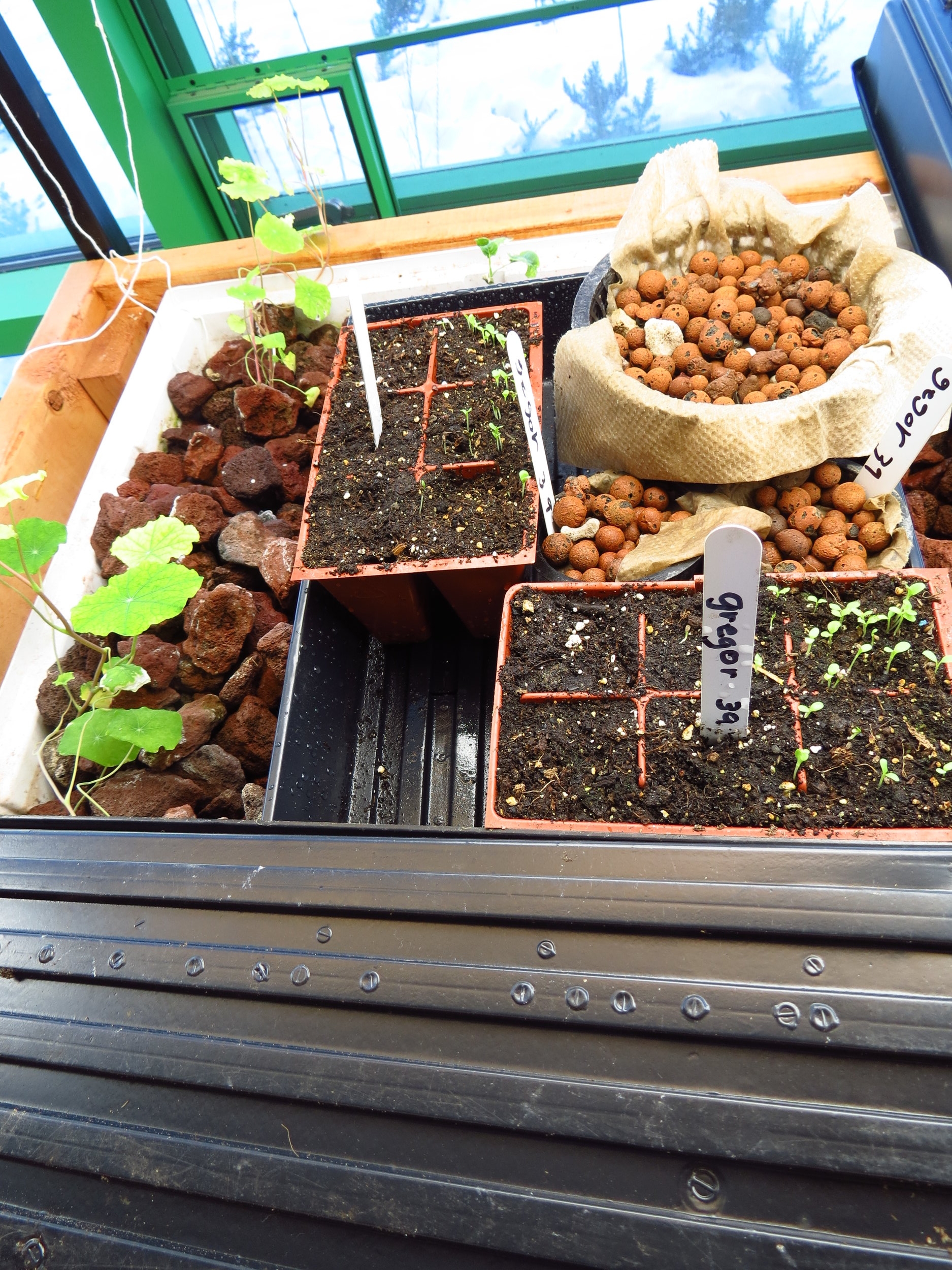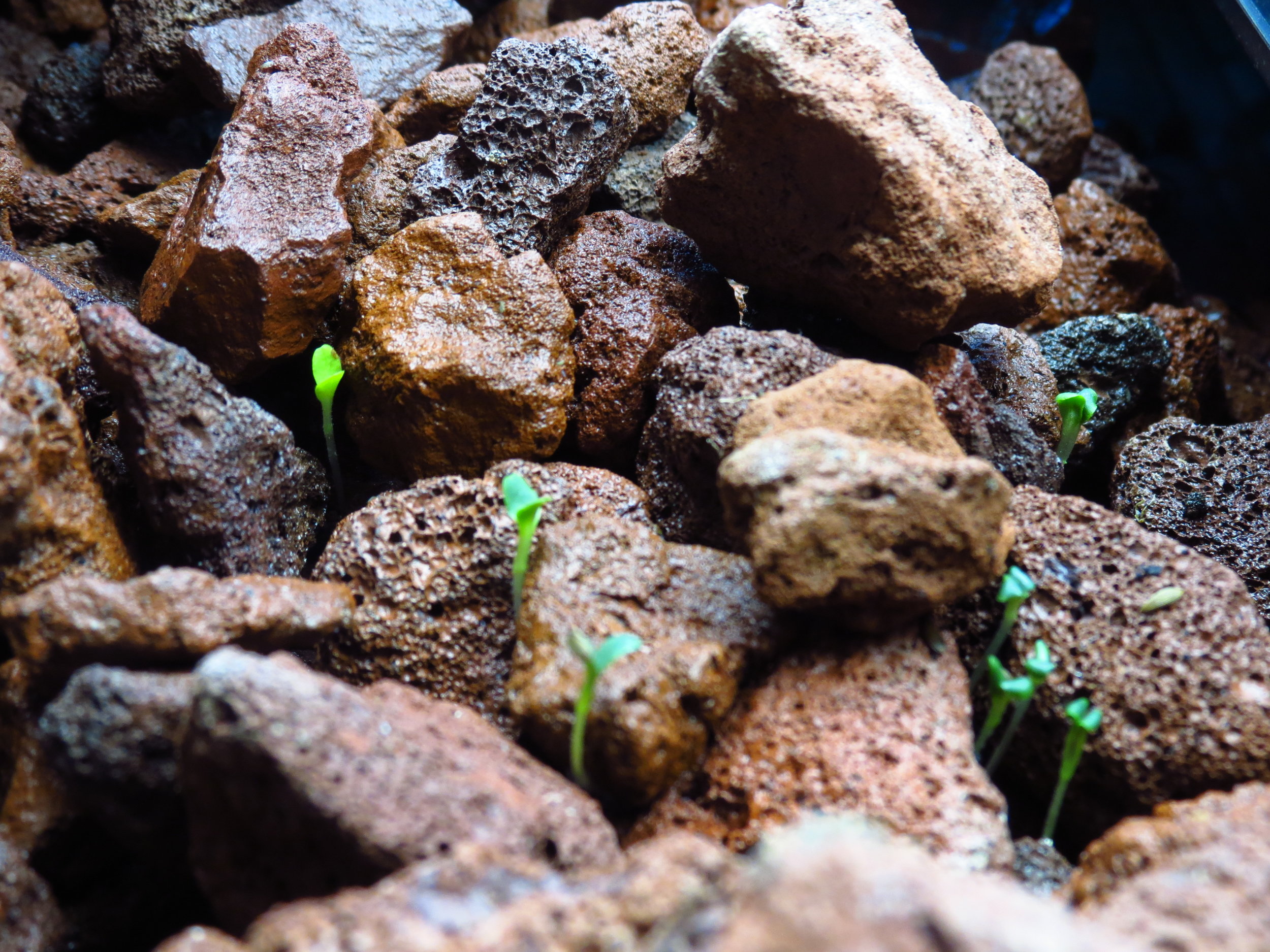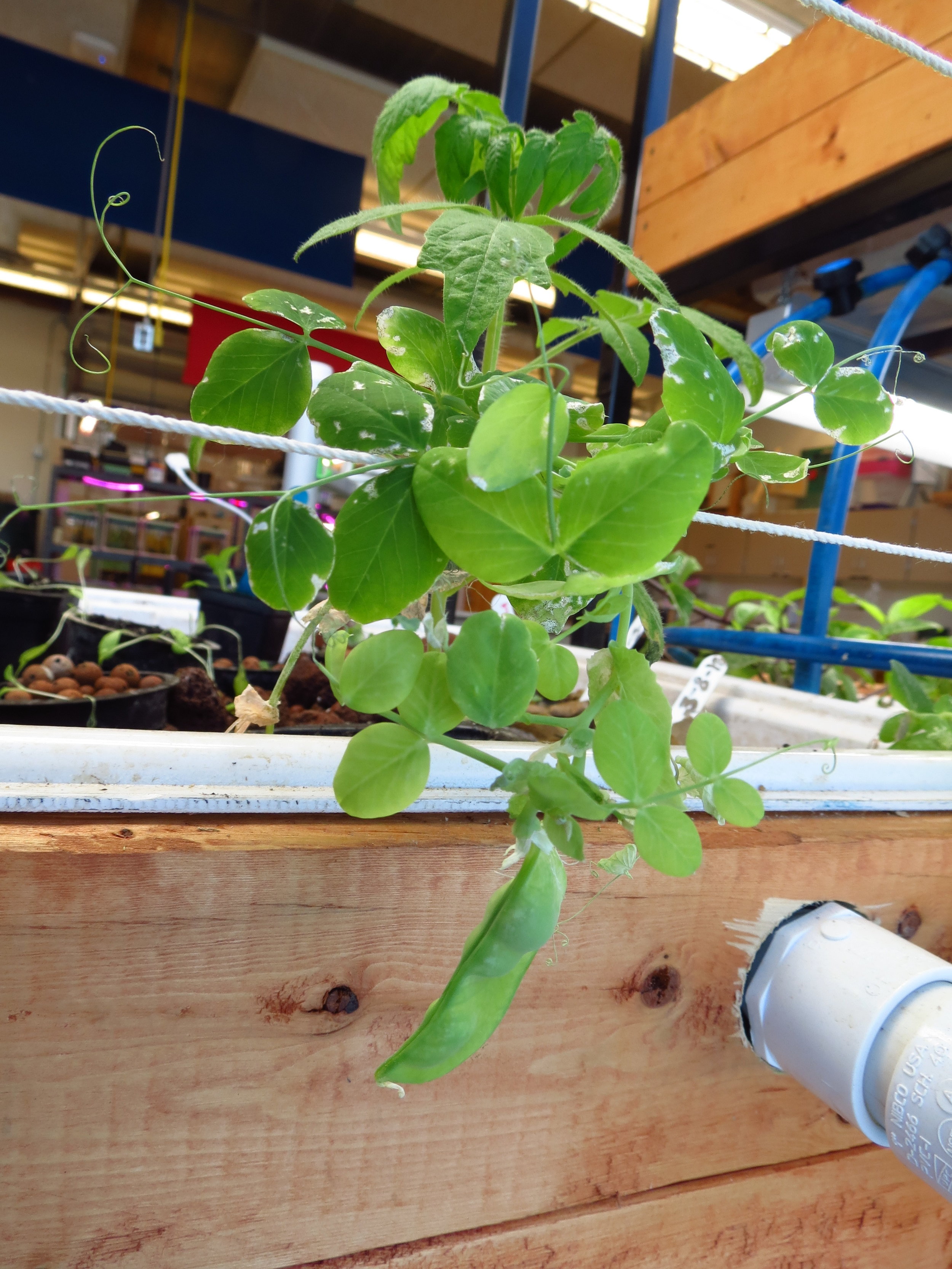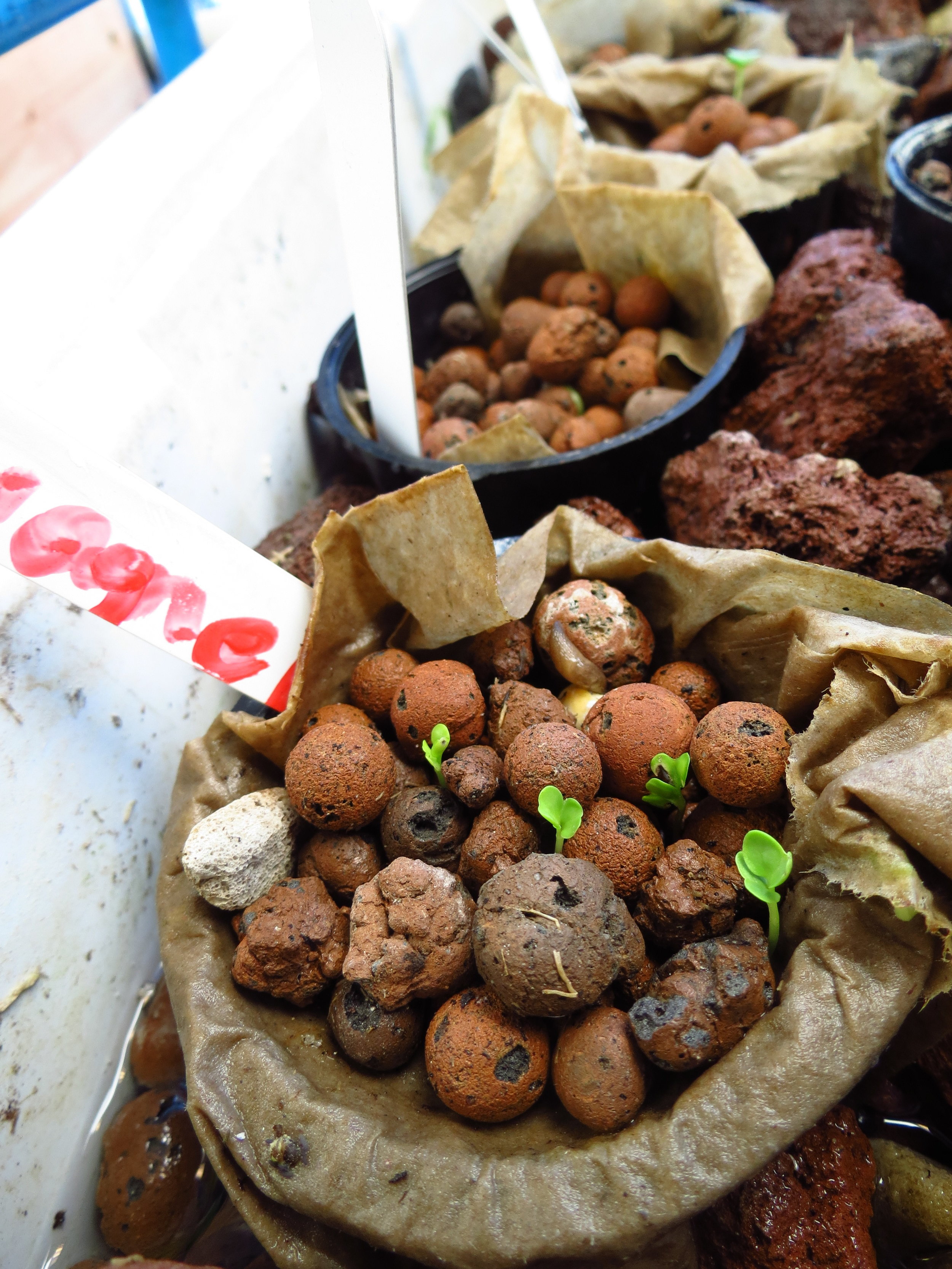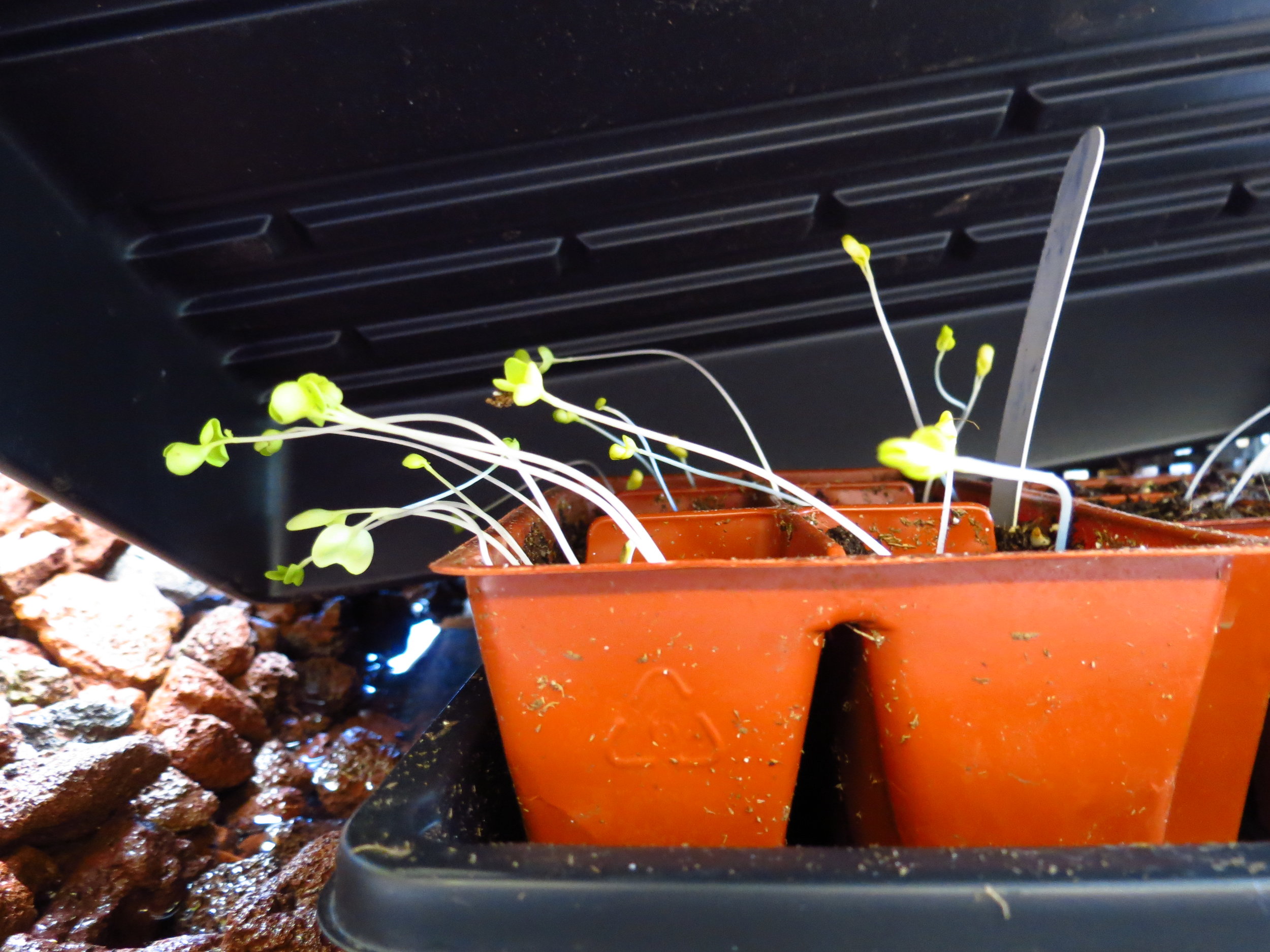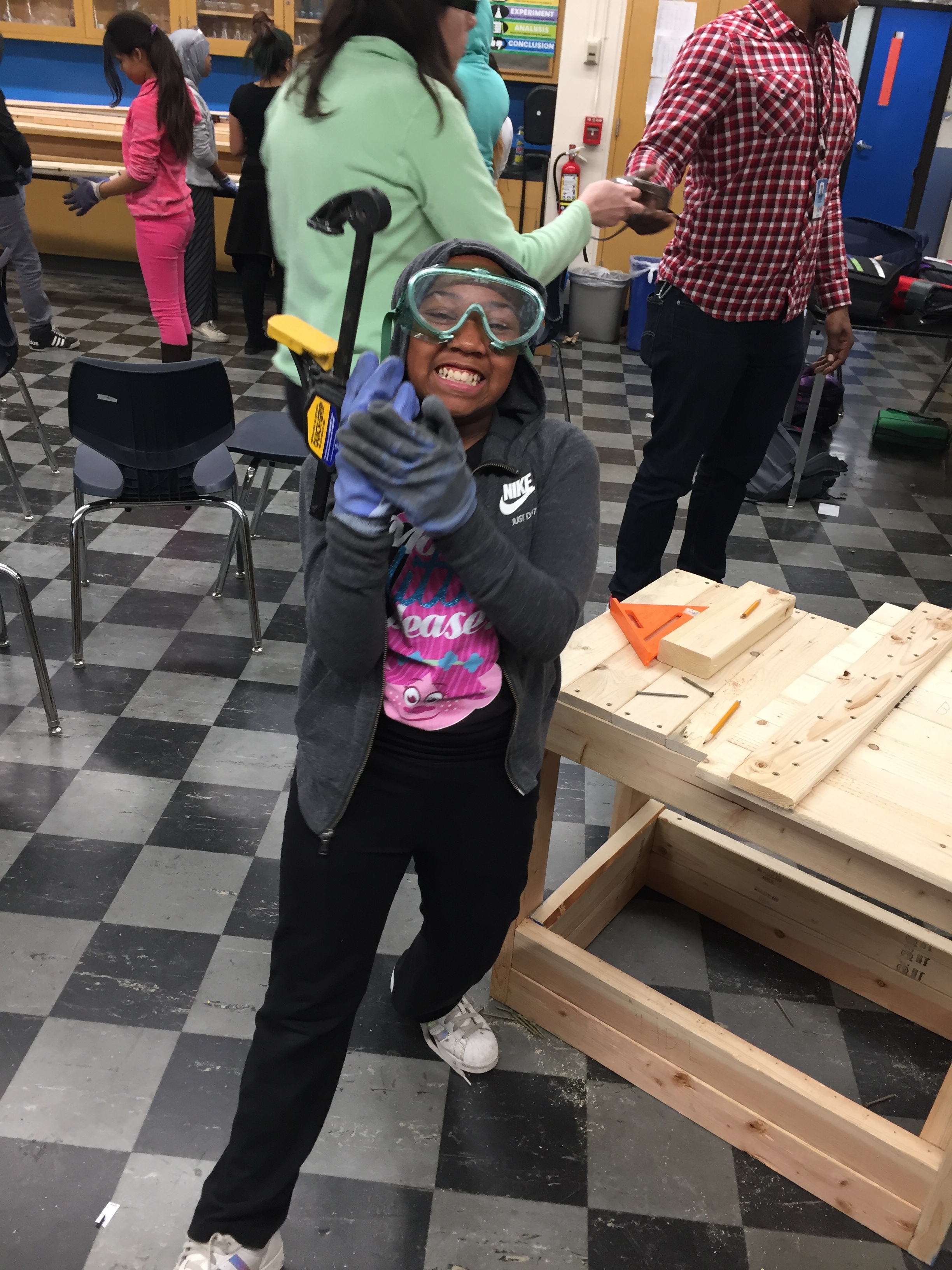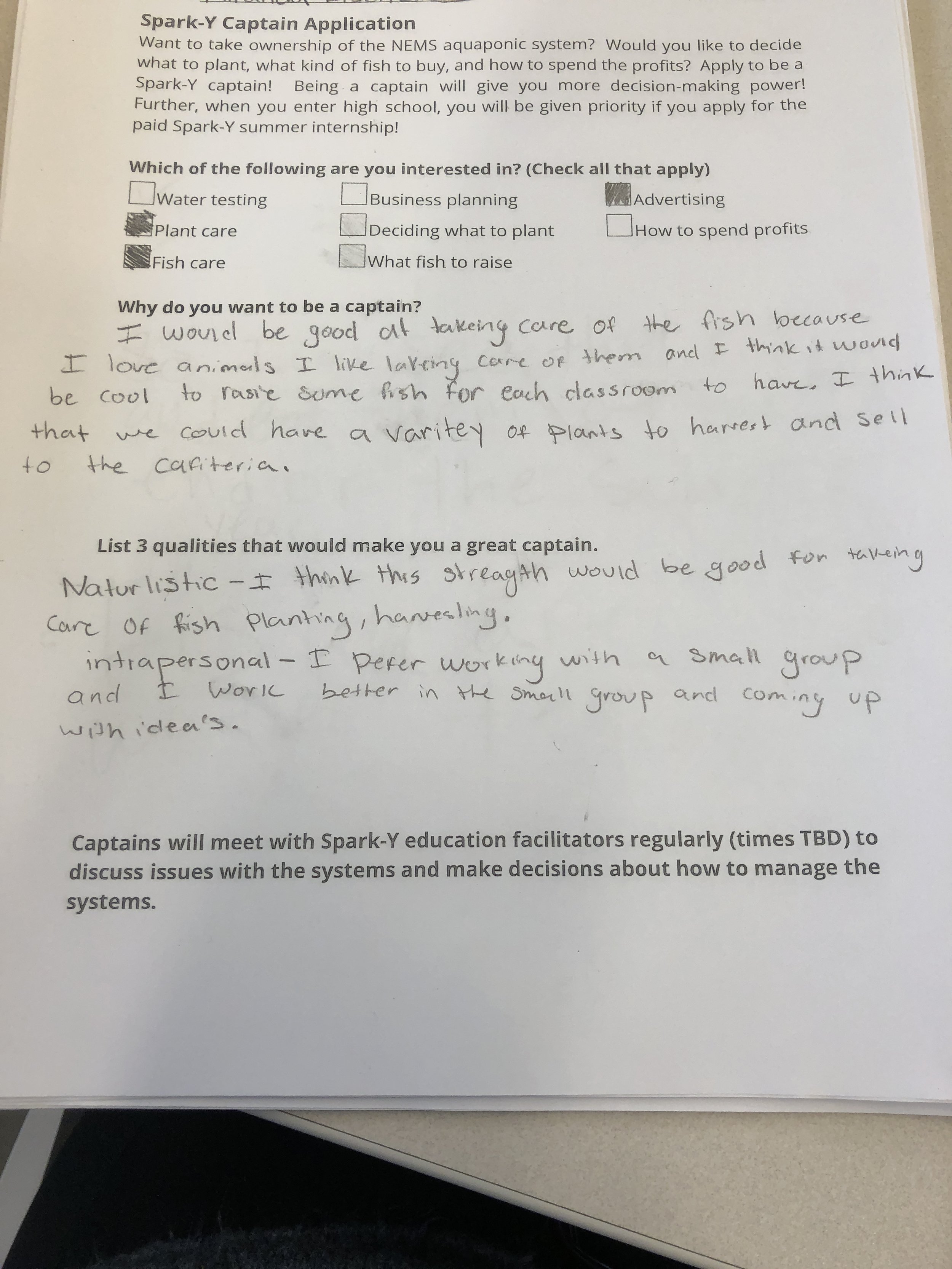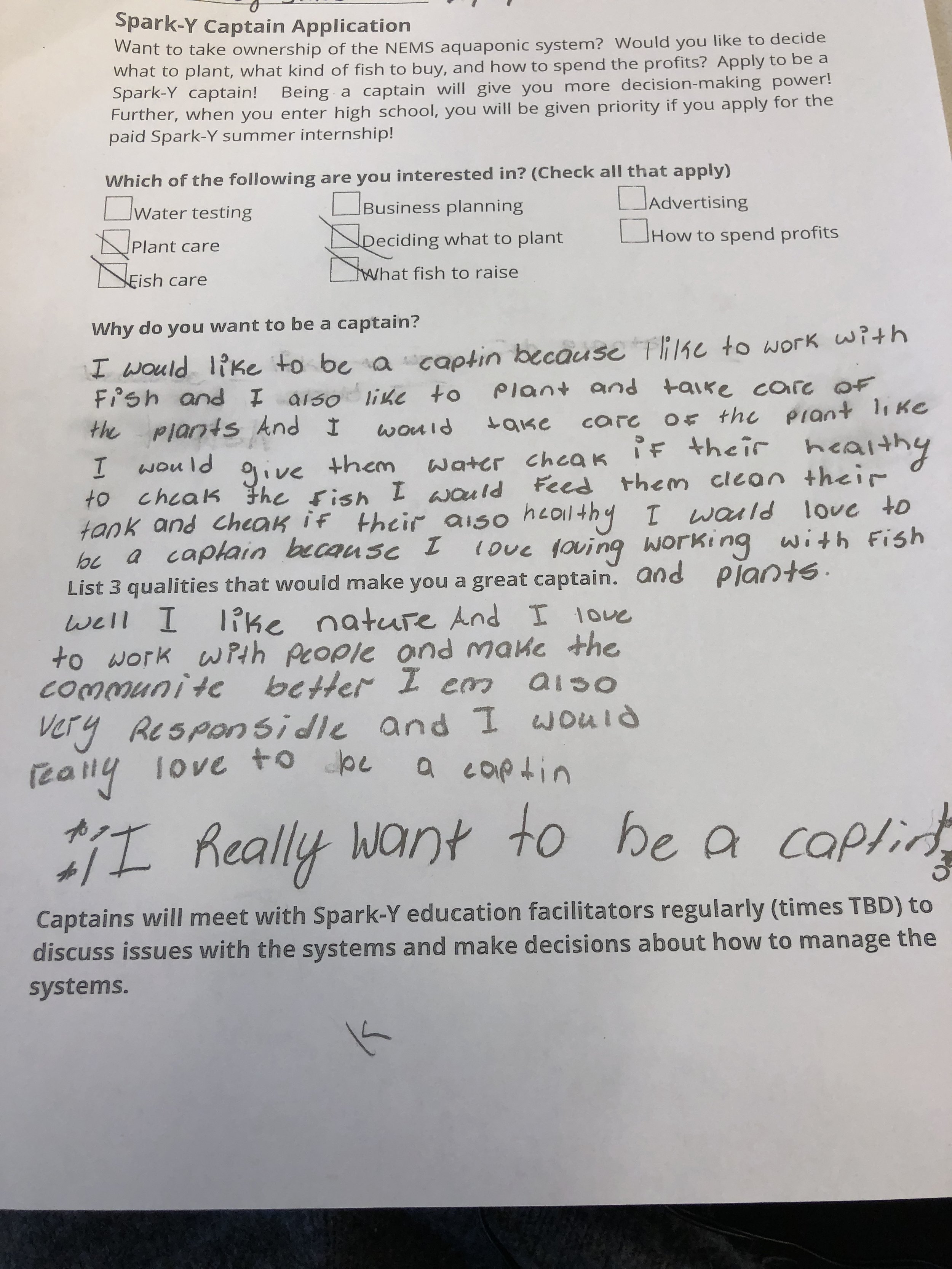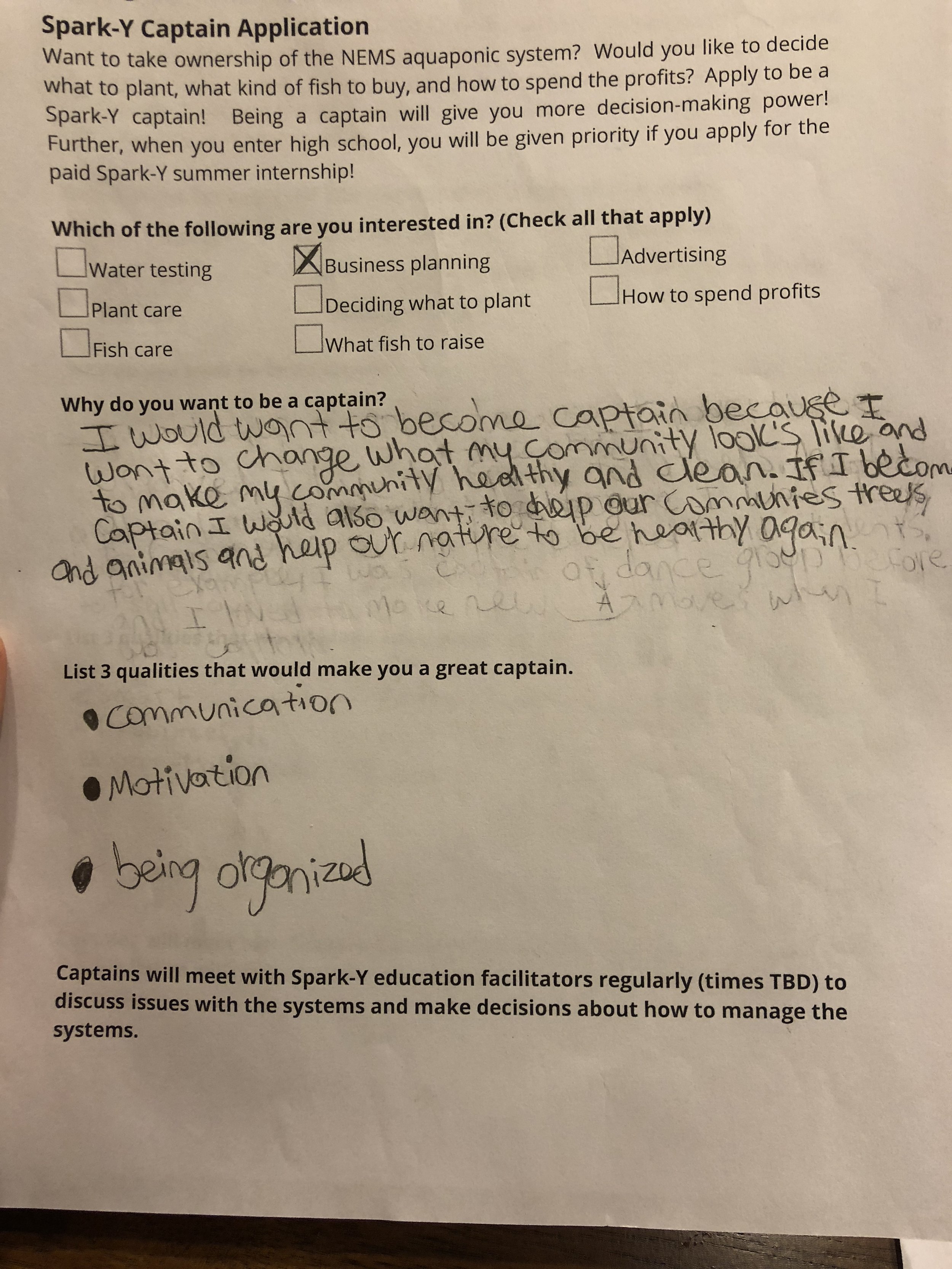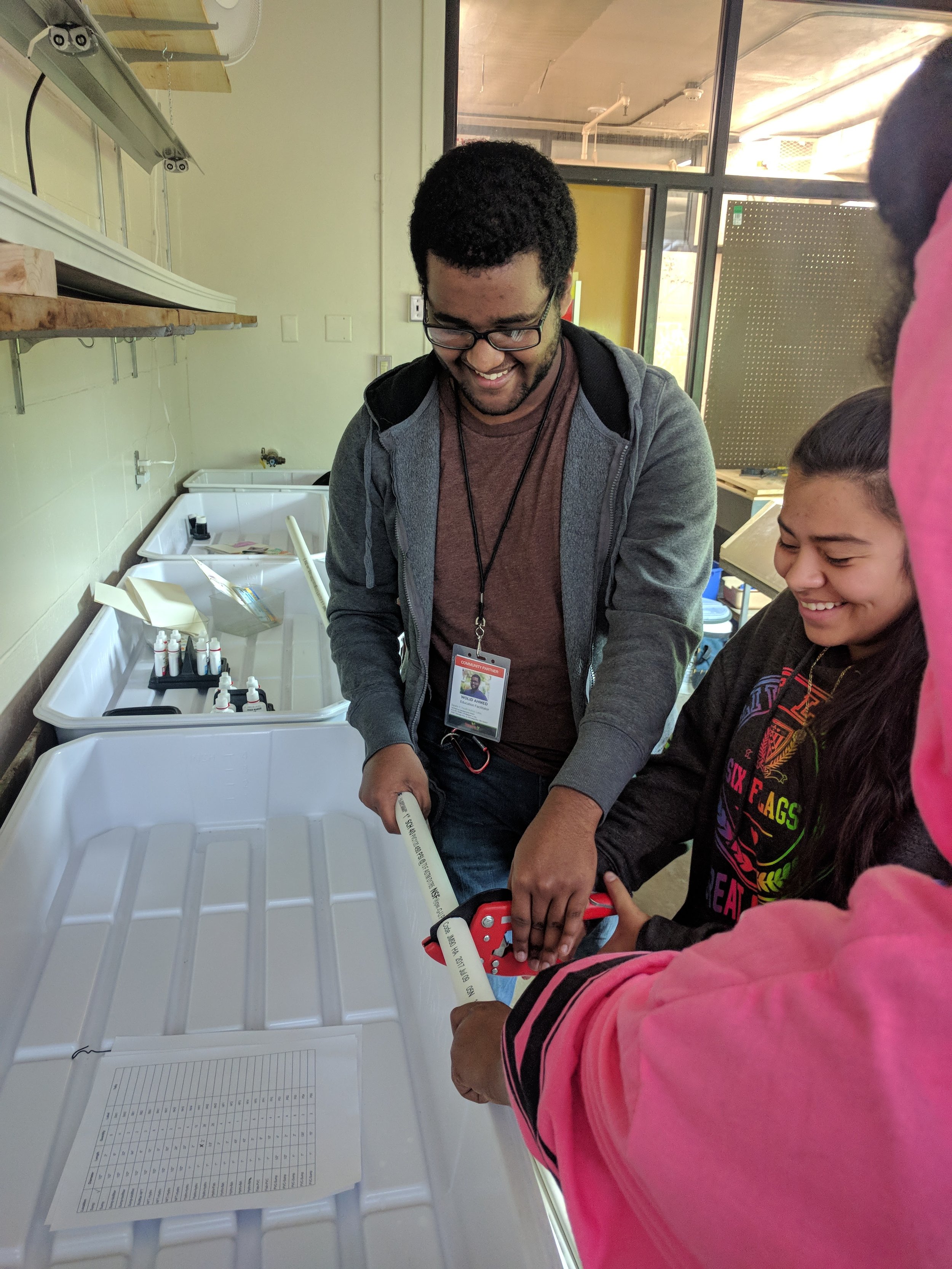The following blog post profiles Urban Farm Manager, Caitlin Barnhart,
as a part of our Spark-Y Staff Spotlight Series.
The backbone of Spark-Y is sustainability and entrepreneurship, two practices embodied in the staff the organization employs. In the instance of one staff member, another story can be told: the rise of women in urban agriculture.
Just before giving a tour to a group of students through the Urban Agriculture Lab, Caitlin Barnhart, Spark-Y Urban Farm Manager sat down to share her experiences as a staff member and her journey into urban agriculture.
“Especially when younger girls come in [to the Urban Agriculture Lab] I think they see that as a cool thing. It’s really not traditional that they see a female in this role. And a lot of the time, I think they are more willing to ask a question, are excited about what I do, and are more willing to say: ‘Hey! I want to do that too!’”
That wasn’t necessarily the case for Barnhart, who questioned whether there were role for women in this field. Fresh out of college, she noticed the majority of roles held in agriculture were held by men.
Graduate of the University of Minnesota in Food Systems, with a minor in Sustainable Agriculture, Barnhart was paired with Spark-Y as a community partnership experience in one of her capstone classes. Following her experience, she signed up for Spark-Y’s Summer Internship program in 2015 and was hired at a Spark-Y Education Facilitator while still in school.
It was a month before Barnhart was to graduate when she sat down with Nick Phelps, professor and mentor. He asked her questions about what she was passionate about and what she saw herself doing post-graduation. “I think my direct quote was I want Sam Menzies’ job at Spark-Y,” says Barnhart. Sam Menzies was Operations Manager at Spark-Y and had played a critical role in designing and building the organization’s 1,300 square foot indoor urban farm in South Minneapolis. Phelps encouraged Barnhart to pursue the position.
Spark-Y Urban Ag Lab:


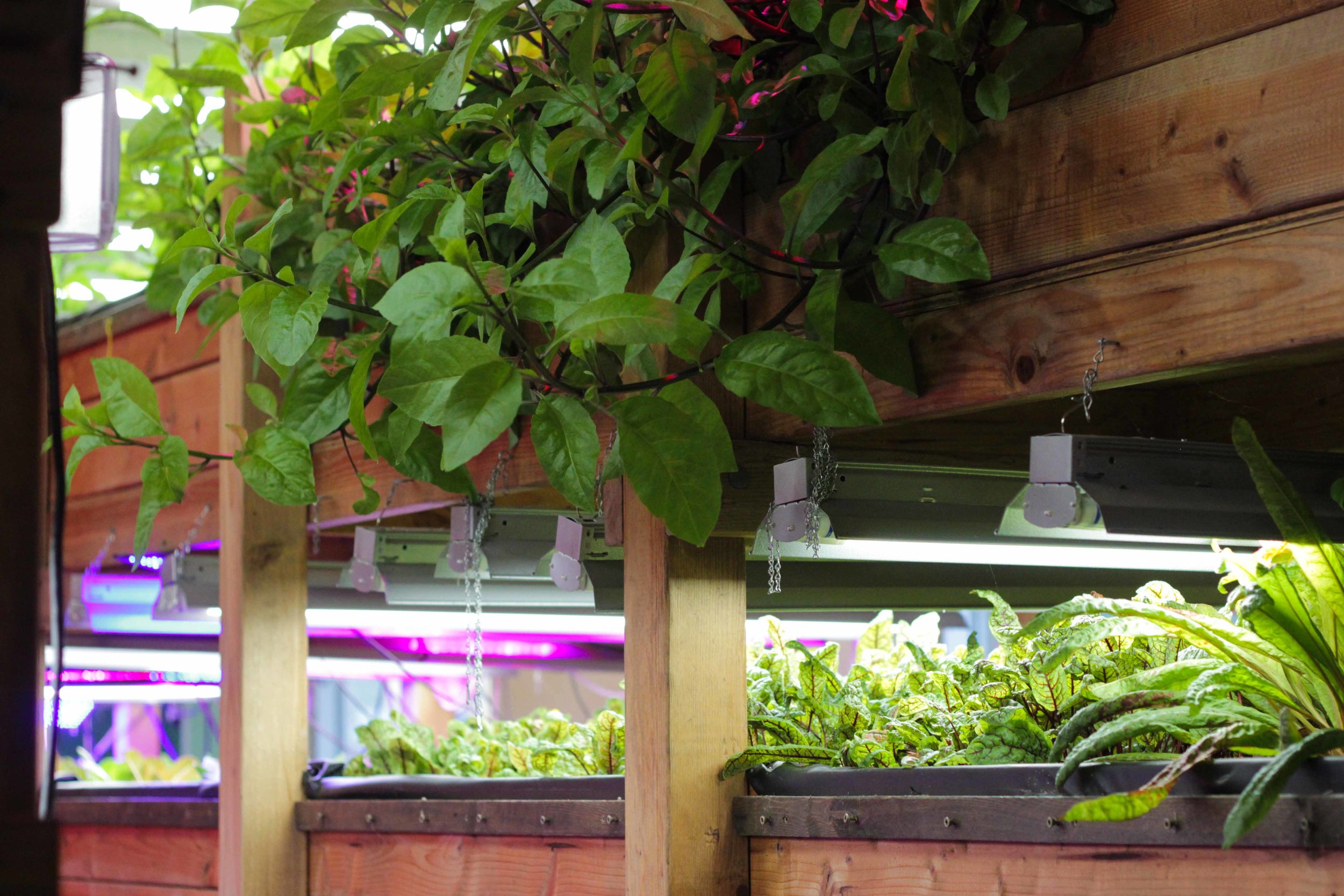


Post-graduation Barnhart accepted a full-time Education Facilitator position at Spark-Y, where her role was teaching sustainability and entrepreneurship to youth in classrooms through hands-on sustainable systems. “While I loved that experience, I also realized that my passion is more on the farming and the hands-on side of things,” reflected Barnhart. This prompted Barnhart to look to other areas of the organization that held greater interest for her, culminating in a 14-page proposal focused on what she could contribute towards the urban agriculture arm of the organization. She presented her plan to Zach Robinson, Spark-Y Executive Director. “He said, ‘Yeah, I love that. Your energy is great and you’re going to do that.’ And today I am pretty much doing all of those things.”
Urban Farm Manager at Spark-Y since September of 2017, Barnhart did in-fact gain Sam Menzies job. Today, Menzies works as Operations Director for Spark-Y overseeing sustainable systems at the Urban Agriculture Lab and in the classrooms.
Working with a small, dedicated team, the Urban Agriculture Lab has seem more than a few changes since Barnhart came aboard, including a partnership with Gentleman Forager to sell microgreens to local restaurants, indoor growing expansions such as hydroponic growing towers, fish breeding tanks, and a soil lab completed with the help of a 2017 internship team. Menzies and Barnhart also developed and executed a Spark-Y Plant Sale in 2017 and 2018, adding another revenue stream to the organization’s mission of youth empowerment.
“Caitlin’s passion for urban farming has contributed to the Urban Ag Lab’s highest revenue in a season to-date,” says Menzies. “And with a young staff, empowerment within our organization is critical. We encourage our staff to be creative, take risks, and bring their visions to life. Caitlin embodies this philosophy.”
Spark-Y Microgreens
Barnhart feels that she has found her place within the organization. “I’m roughly fresh out of college, and not a lot of people get the level of freedom or responsibility that I get in this role - and that’s what I really enjoy about Spark-Y,” she adds.
There have been some defining moments for Barnhart along the way, including a Spark-Y partner calling to ask if she would be willing to give a tour to another young female interested in the field of agriculture or a group of fourth graders that enjoyed aquaponically-grown red veined sorrel after she told them it tastes like Sour Patch Kids candy. She thinks that youth having the opportunity to tour a growing facility at a young age makes a difference, noting that she did not become aware of sustainability or urban farming until a class in college.
Barnhart adding "worm juice" from vermicompost systems to aquaponic-grown red veined sorrel.
Today, Barnhart recalls just how important it is to find something you are passionate about and stick with it. A passion that is easily displayed in Barnhart’s contributions to the Urban Agriculture Lab and the way she speaks about her position: “I love the smell of dirt, the feeling of nature, you know, that feeling you get when you walk outside on a dewy morning is the same feeling you get when you walk into this lab and it’s 20-degrees outside. It’s a loving, nurturing feeling and you just don’t find that anywhere else.” A far cry from a young college graduate wondering if there was a place for her in urban agriculture.
